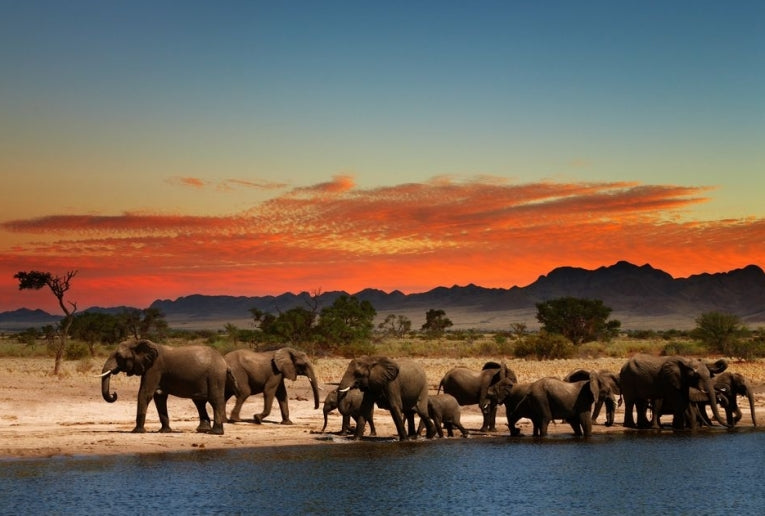The established practice of Asian-inspired poaching of African and other elephants has had a terrible impact on populations everywhere. There is none worse than in the African countries where great effort has been put in to protect the three major population groups. The state of these elephant populations is critical to study of all African habitats where they occur. With the recent loss of a quarter of Botswana elephants and eradication in some Central and west African areas, we have to be alert to further losses.
A recent "spike" of killing in the Samburu Elephant population of northern Kenya brings this new paper into topical perspective. The three authors are George Wittemyer, David Daballen, and Iain Douglas-Hamilton, all very experienced in the field. Publishing in the journal PLoS ONE, they have data that is often only available from well-protected conservation areas.
This naturally gives a distorted picture as poaching is much more frequent in less-policed areas. Semi-arid Samburu, however, has many ivory poachers, who work more frequently in drought conditions. They have provided a very realistic appraisal of the elephants' situation today.

Map of the Samburu and Buffalo Springs National Reserves in Kenya, East Africa; Credit: © PLOS ONE
As you can see, it is central in Kenya, in that small white spot on the RHS map. After 14 years (1997-2011) of depredations, CITES and MIKE (Monitoring of Illegal Killing of Elephants) use Samburu to assess links with legal ivory trading and illegal killing.
Over the 220km2 reserves, divided by the Ewaso N'giro River, elephants were identified and monitored "closely," although the elephants roam outside the reserves, covering a massive 3500km2. Tourists habituate the elephants to human traffic, so observation isn't difficult. 509 females and 425 males were followed, with 494 births and 340 deaths.
Their ages were known in 63% of cases, but molars gave ages enabled age estimates in some other cases, giving an accuracy of ± 3 years. The peak known population was of 558 in 2005, with male survival to the age of 10 years 6% less than females. Compared with any other studied population, Samburu had the lowest survival rate, especially in males' life expectancy at birth(only 19 years on average).
Now, to the nitty-gritty. 32% of all deaths were due to illegal killing. Natural causes mainly killed young elephants, especially between 3-9 years. This is the first time we have been able to assess the impacts of illegal killing on populations. Survival, breeding-rate and population metrics can now all be assessed properly. The number of orphans, for example is increasing rapidly, leaving a new conservation problem. Most important, more than half of this much-loved species are being wiped out as a result of greed for ivory. In response the poor elephant can only produce more young, only to have those individuals cut down by poachers too.
It is our responsibility to use any means at our disposal to stop the traffic.










